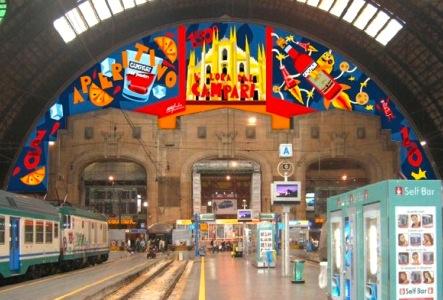If you are in Florence or Milan this week, you still have a chance to catch these.
Waxes by Gaetano Zumbo
The Opificio delle Pietre Dure in Florence is displaying a somewhat gruesome work by Gaetano Zumbo, probably the finest of Italy’s wax modellers in the seventeenth century.
The work, which has been carefully restored, depicts the decomposing bodies of five syphilis victims. The figures are in miniature and some of their details can only be seen through a magnifying glass [which may be just as well for those with less strong stomachs]. It is probable that the work originally contained more models of bodies.
Zumbo’s technique was to begin by modelling the figures in clay and take plaster casts of them. He then mixed wax, vegetable resin and colours and stretched the mixture over the casts in layers to obtain “skin” for his figures.
Gaetano Zumbo was born into a noble family in Siracusa [Sicily] in 1656. He was educated by Jesuits and obtained the title of Abbot which entitled him to a small allowance. It is likely that he later studied anatomy in Bologna. He began to work as a wax modeller there and by 1691 he was working for Grand Duke Cosimo III de’ Medici in Florence.
 In 1695 he travelled back to Bologna and on to Genoa, where he worked with the French surgeon Guillaume Desnoues.
In 1695 he travelled back to Bologna and on to Genoa, where he worked with the French surgeon Guillaume Desnoues.
Zumbo made wax models which assisted Desnoues in his medical studies and teaching. In 1700 Zumbo moved to Paris where King Louis XIV granted him the royal privilege for producing anatomical preparations in coloured wax. He was also granted permission to give lessons in anatomy. Among Zumbo’s fans was the Marquis de Sade. Zumbo died in Paris in 1701.
In 2006 a Zumbo model of a plague scene fetched £12,600 at Christie’s.
"Mirabili Orrori" by Gaetano Zumbo is at the Museo dell’Opificio, Florence until January 31st.
Ancora Campari
Now to a more cheerful exhibition which you can see if you are passing through Milan.
The Italian aperitivo Campari is celebrating its 150th birthday and pop-art artist Ugo Nespolo has covered the three arches over the railway lines of Milan’s Stazione Centrale with Campari images. Nespolo imagines a Campari satellite spreading its red image through space.
Visitors arriving in Milan by train are greeted by what are perhaps its two most famous images – the Cathedral and Campari, depicted together in the centre of an arch with a bright blue and white background.
The Campari company was one of the first to recognise the potential of using modern art in its advertising campaigns and to appreciate the role of art in communication. Nespolo says he is happy to work with the company again for this reason.
"Ancora Campari" is at the Stazione Centrale, Milan until 31st January.









